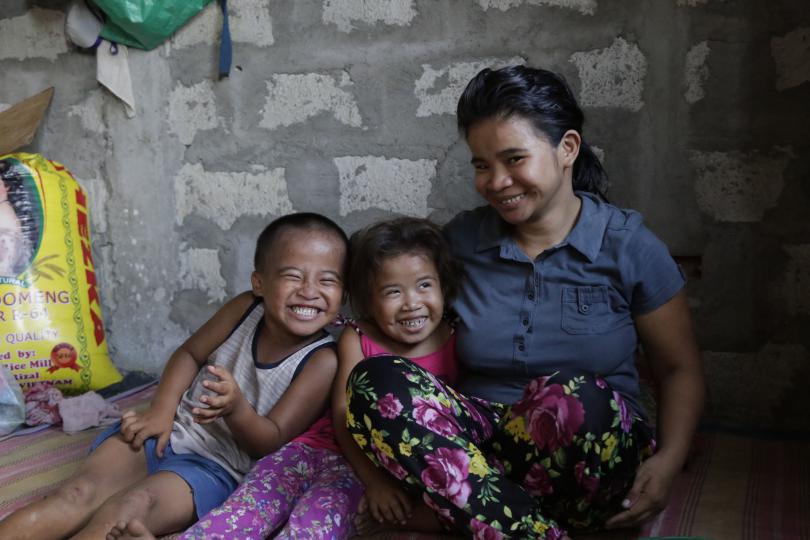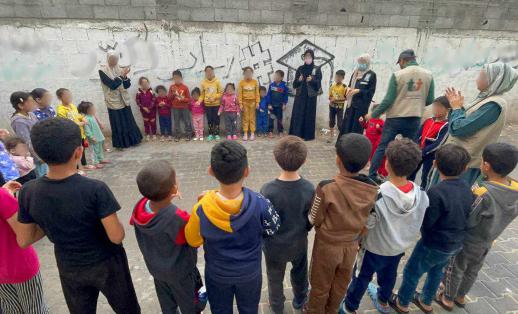How we’ve failed – and how we’re bouncing back

Nuri*, 15, smiles with a Save the Children exercise book near her home in a Rohingya camp in Bangladesh. Photo: Rubina Hoque Alee/Save the Children
In the mid-20th century flying was relatively dangerous. In 1941, there were more than 2,900 crashes worldwide. By 2022 that number was reduced to 100, and there were just five fatal accidents among 32.2 million flights worldwide. This exceptional safety record was built from the wreckage of failure, with rigorous learning from many incidents. Matthew Syed, a writer and journalist, calls this “the paradox of success.” So what does it mean for Save the Children?
{cta | We stand side by side with children in the world’s toughest places. <span class="text-primary">Your support is urgently needed</span>. |https://donate.savethechildren.org/| Donate now}
It is common wisdom that failure is an invitation to learn and grow. Indeed, Syed argues that “the most important determinant of success in any field is an acknowledgment of failure and a willingness to engage with it.” But learning from failure is hard. There is a wealth of evidence that people struggle to handle failure constructively. Added to this, our ability to learn from failure depends on our ability to recognise it – but failure is often clouded in ambiguity.
Only when we invest in rigorous monitoring and evidence generation, can we identify failures and learn from them. At Save the Children, regular project monitoring and our Global Research, Evidence and Learning Agenda help us generate evidence to consistently implement and replicate impactful interventions, and to explore the potential of new solutions. However, our successes are inevitably highlighted more than our failures. To highlight examples of (learning from) failure, Sponsorship launched the Bounce Back Award across 20 countries last year.
Failure can be understood as the gap between an anticipated result and current reality. Adapting a framework proposed by Amy Edmondson, Professor of Leadership at Harvard Business School, we can identify three broad categories of failure: preventable failures, complexity-related failures, and frontier failures. Preventable failures are generally ‘bad’ failures resulting from deliberate violations, inattention, or lack of ability, and are out of scope for this blog. But complexity-related failures and frontier failures can be ‘good’ failures that generate valuable learning and do not warrant blame.
A complexity-related failure is a failure to achieve results that might be reasonably anticipated, due to the complexities of a situation. For example, it is reasonable to expect that an airplane journey will get you from A to B in one piece, and it is reasonable to expect that an intervention with a strong evidence base will deliver certain outcomes – so when unforeseen events cause an airplane to crash or nullify the impact of an evidence-based intervention, this can represent a complexity-related failure. When results are expected, failure is particularly hard. But addressing these failures can lead to very important gains as exemplified by the aviation industry.
In complex environments, evidence-based interventions can fail because conditions vary and unexpected challenges arise. In these contexts, ‘good’ failures can occur without fault, and root cause analysis can reveal opportunities to strengthen systems and processes. Responding to these failures can inspire innovation, when the failure prompts the development of entirely new components. More often, complexity-related failures drive incremental improvement, focused on optimising processes for local conditions, and increasing the reliability and efficiency of our approaches.

Merlina*, 26, with Timothy*, 6, and Feliza*, 5, giggling together at home, Philippines. Photo: Lei Tapang / Save the Children.
Take, for example, the experience of Save the Children Philippines, the Bounce Back Award winner in 2023. The Philippines Sponsorship team introduced an intervention called Tips By Text, which aims to improve children's learning and development by sending SMS messages to parents and caregivers to help them create positive educational environments and build children’s social-emotional skills. The intervention was originally developed and implemented by Standard University in the US and has a robust evidence base.
As part of the intervention, the Philippines team ran a 40-week randomised control trial (RCT), involving over 1,800 families, to test if the messages had an impact. But the RCT showed no statistically significant difference in test scores between the treatment and control groups. Two reasons were identified for this failure: first, as with the Stanford programme, they automatically enrolled parents and caregivers, but this reduced trust as the messages were not expected; second, the messaging was insufficiently focused on early childhood development, incorporating additional advice on COVID-19 prevention, parental wellbeing, and positive parenting.
The disappointing performance of Tips By Text represents a complexity-related failure due to the challenge of adapting the programme to a different set of conditions, including the very significant demands of responding to COVID-19. In response, the team are correcting their approach by proactively identifying and enrolling parents and re-focusing the messaging on early childhood development. They intend to carry out further small-scale tests before conducting another RCT.
A frontier failure is a failure in pursuit of radical innovation, involving experiments that target bold, ambitious improvements, or aim to create entirely new capabilities. Frontier failures arise from proactive attempts to test new ideas and ways of working at an appropriate scale, and within suitable and safe boundaries. Prototyping and testing radical ideas can generate valuable new knowledge of what works, and when failures occur they can prompt new directions for solution development.

God’s Gift, 13, at his school in Benue State, Nigeria. Photo: Tom Maguire / Save the Children
For example, Save the Children’s Migration and Displacement Initiative launched a project aimed at predicting patterns of conflict-induced displacement using cutting-edge computational models. The project initially focused on refugee flows between countries over a five-year period. The available data was frequently sparse and messy, and the team developed and tested various approaches and techniques in response. But the tests did not meet the required performance threshold for them to be useful for anticipatory action.
Learning from this failure, the team pivoted, zooming in to sub-national country contexts with better data available, and applying the technical learning and approaches gained during the first phase to build new models to predict internal displacement. This was combined with new types of models that were less reliant on large-scale quantitative data, avoiding the pitfalls of the original design. This time the team was successful, and the resulting models were successfully deployed in Nigeria, allowing the country office to prepare for arrivals at key locations.
The project was able to make the necessary pivots and adaptations, and ultimately succeed, due to recognition that the initial failures were ‘good failures’, driven by an ambitious aim and tested in a responsible manner which generated useful learning to change course and move forward. When an idea is speculative and failure is a distinct possibility, such support is often hard to secure, which is why raising awareness of failures, and providing dedicated funding for frontier innovation is so important.
In 2024, Save the Children’s Bounce Back Award will be extended across the movement, showcasing the ways in which we’re learning and improving as an organization, whether in the service of delivering consistent results against our core objectives, or exploring new ideas that increase our ability to realize our strategic breakthroughs for children – ensuring all children survive, learn, and are protected from violence.







